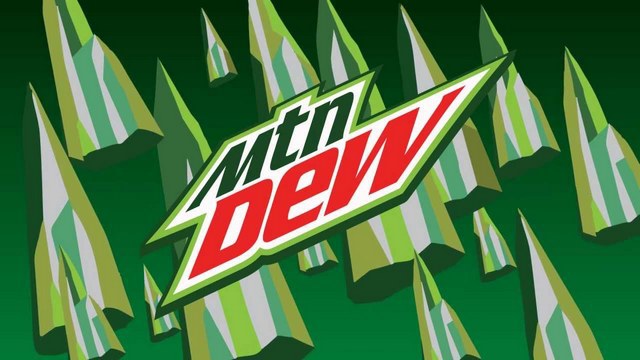A carbonated soft drink which is produced under the supervision of PepsiCo. It was originally invented by a Tennessee based beverage bottlers Barney and Ally Hartman in the year 1940. The revisions in the formula kept on happening. It was acquired by PepsiCo in the year 1964 and then there was a change in logo to position it as a drink for youths.
It has been positioned completely as a drink for youth and its promotional activities are also designed and advertised in a manner to attract this segment of the market. It is currently among the top 5 drinks sold in the US market.
Table of Contents
Strengths in the SWOT analysis of Mountain Dew :
This helps in understanding the core areas of the business where it beats the competition and has the competitive advantage in the market. Strengths are generally the core competency of the business.
- Strong Brand Name – Mountain Dew has been able to create a strong brand awareness in the minds of the customer and consumers are able to recall the brand name because of the memorable advertisements and promotional activities carried by the brand.
- Different and Unique Taste – One of the strengths of mountain dew is its taste which is completely different from the other sodas available in the market.
- Positioning – It has a done a very clear positioning in the market and hence on the perceptual map it has a clear differentiation with the other brands on the basis of the taste and the target segment.
- Well established parent company – The parent company is PepsiCo and has it has deep pockets to aggressively market the product globally. The strong brand name of the parent company also adds to the value.
- Distribution Network – The distribution network and the availability of the product in the market is very well established. As the parent company is PepsiCo and hence the well-established network is leveraged for Mountain Dew to make the product available in all the all major retail stores and cities.
Weakness in the SWOT analysis of Mountain Dew :
This is the pain area of the organization where it does not have the resources or skills. Business has to work upon these areas so that they are not left behind from the competition. Though there will be some or the other weakness it should not be an area which takes the business pout off the market
- Weak Target Market – The brand is totally targeting the youth and hence to keep youth attracted towards the brand a lot of investment is being done in the promotional activities for innovative ways of retaining the youth consumers. The target market is very limited and even in promotions, the brand does not target any other segment which further reduces the scope of market share.
- Less ROI – The competition, on the other hand, is very high and hence the ROI is less in the promotional activities as the market share is limited.
- Market Penetration – The penetration in the market is considerably less in comparison to the market. Mountain Dew is not considered as a got to drink by the consumers and at the same time, local brands cut away the market share of the brand.
- Sales Cannibalization – Cannibalization of the sales from the other products from the parent brand cause the weak performance in the market. PepsiCo at the same time strongly markets its other products which lead to cannibalization of sales.
Opportunities in the SWOT analysis of Mountain Dew :
This helps in understanding what other things a business can do with the current skills and resources. It helps the business to know the areas where it can expand and take a lead in order to diversify the business and expand the customer base
- Innovate Product – Healthy market is not yet established and hence if Mountain Dew innovates their drinks which brings health benefits to the consumers by maintaining the same taste then it will have an enhanced target segment and market share. Mountain Dew can take first mover advantage in this market by creating a new healthy drink.
- Blue Ocean – The brand can leverage the global network of PepsiCo to enter new markets which will help to achieve economies of scale and also help Mountain Dew to increase its customer base by entering untouched geographical areas.
Threats in the SWOT analysis of Mountain Dew :
This analysis helps in understanding what are the areas which can impact the business in future or right away. So business has to prepare itself to handle the threats in the market landscape. Competition or increasing number of players in the market with same value proposition is a threat to business as it directly lowers the customer base and revenue
- Competition is high – Mountain Dew has a big set of competitors with Sprite being the biggest competitor and accompanied by red bull and other energy drinks which targets the youth and are quite famous in the youth market.
- Parent Brand Concerns – The parent brand has started to think that Mountain Dew can pose a threat to the parent brand itself and hence it might lead to curtailing of Mountain Dew with a limited growth.
Liked this post? Check out the complete series on SWOT

